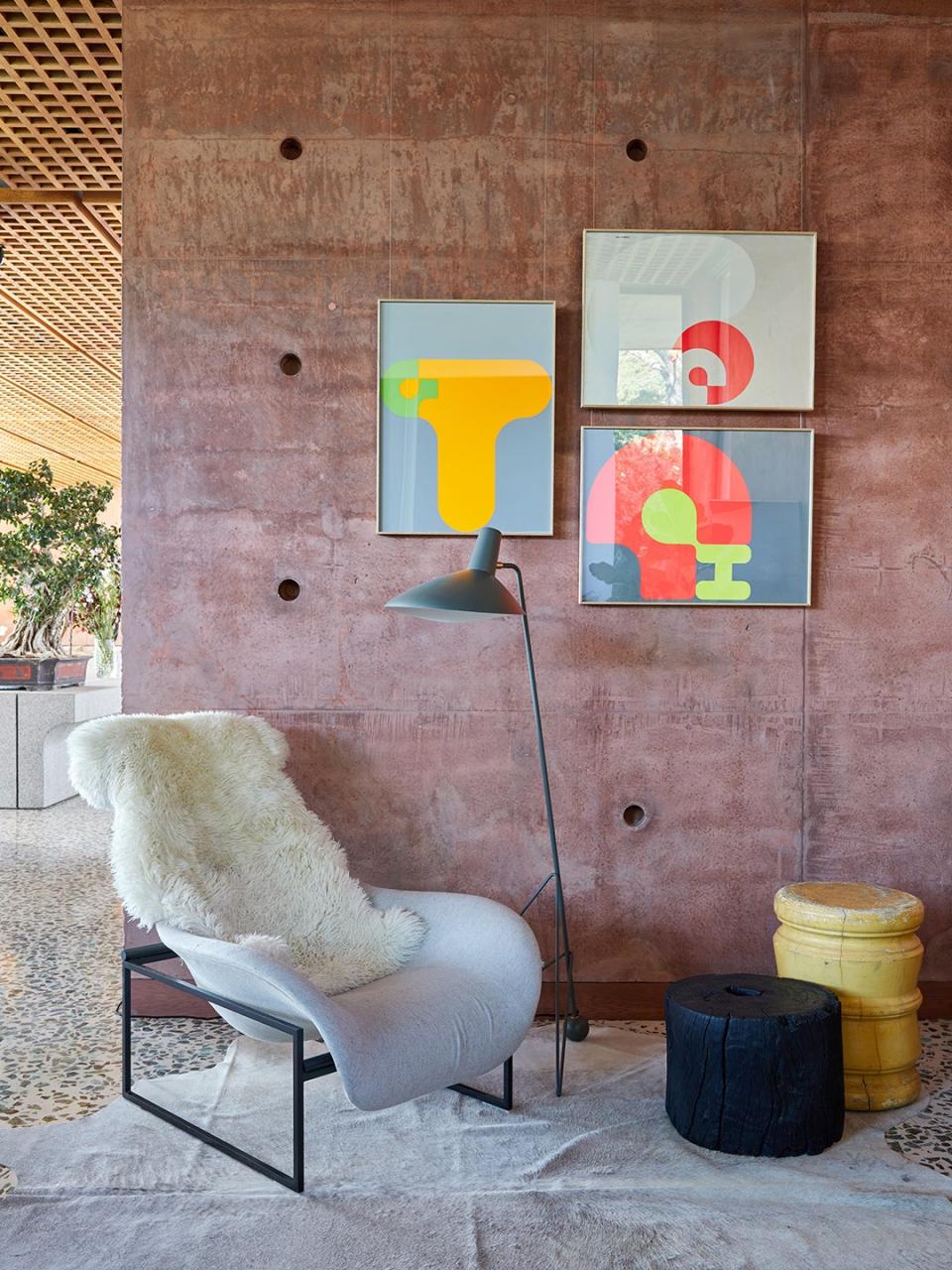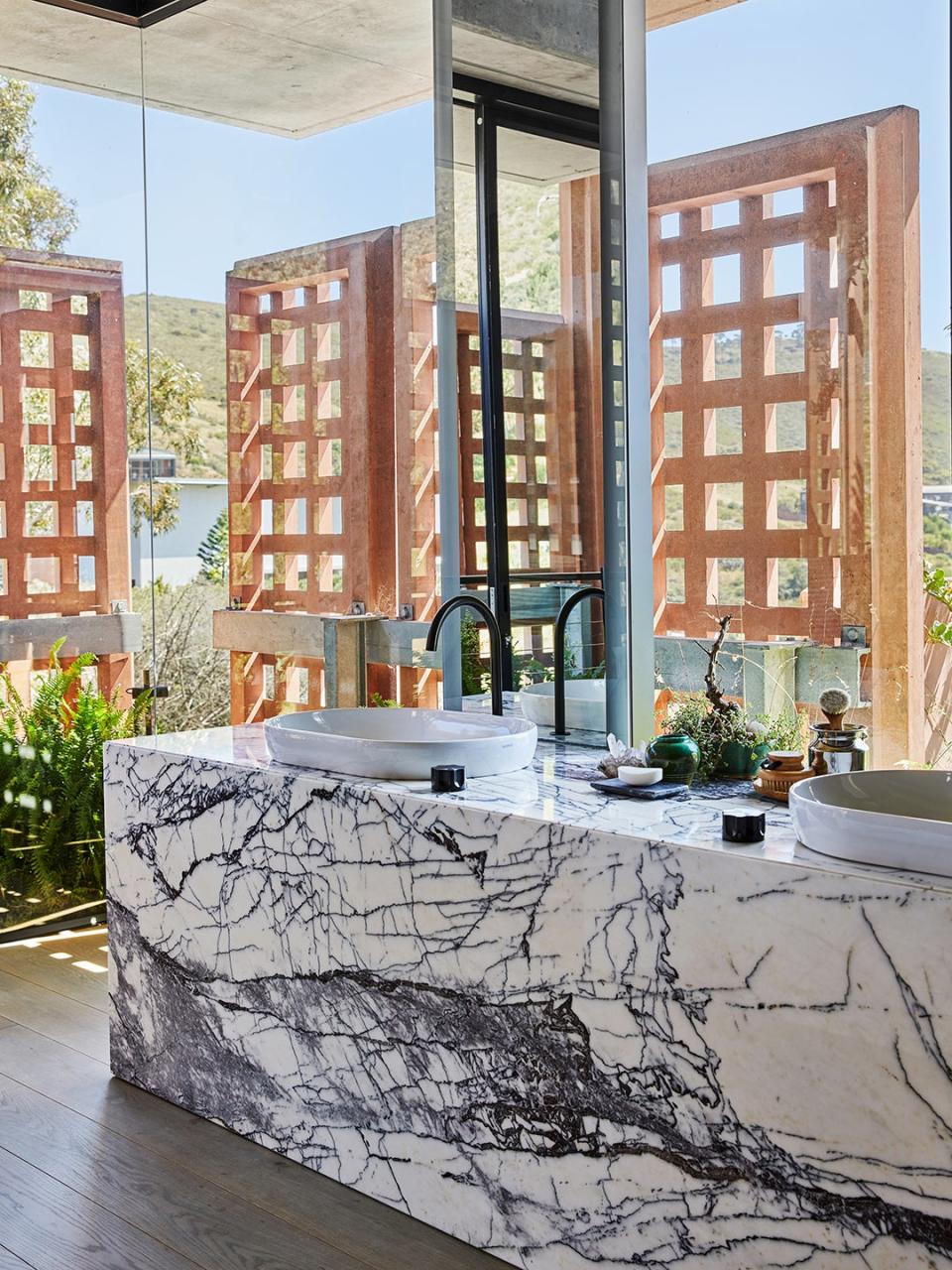On a Steep Slope on Cape Town’s Table Mountain, This Architect Built a Garden in the Sky


Architect and South African native Philip Olmesdahl’s family home is situated on a steep slope on Cape Town’s Table Mountain. On the center level of three stories, there’s a long stretch of terrace flanked by built-in planters overflowing with greenery. “Instead of a garden on the ground level, I wanted to build my garden up in the sky,” says Philip, one of the principals of the firm Saota. Native plants, herbs, and seasonal vegetables thrive. Lately, an assortment of homegrown aubergines, tomatoes, and chilies have made their way to the kitchen for a vegetable bake, “which turned out to be quite delicious,” he says. That is to say: He has reached peak indoor-outdoor living.

The house was a 15-year-long dream come true. He and his family had lived in the area for several years (they had even owned and renovated the place next door at one point), and all along he’d admired the plot of land. Then, in 2019, they finally bought it—and promptly embarked on a three-year-long construction project. “The timing, however, was perfect because we needed a more spacious home for our family when the children got into their teenage years,” he explains.



All the bedrooms are located on the top level, with each of the kids’ spaces situated alongside the next so they have a stunning view of the city and harbor below. Philip and his wife Maxine’s bedroom, dressing area, bathroom, and private covered balcony are located on the northwestern edge. Below that is the main living hub. Keep going down and you'll find the basement floor that holds the game room and Maxine’s yoga studio (she’s the owner of The Yoga Sanctuary). And below that? On the lowest section of the property, where one might usually expect to find a spacious backyard, Philip built two apartments; they are currently being rented. The units are separated from the main structure by a shared wall, promising privacy for the family of five.


The exterior’s distinctive reddish-pink concrete screens, which are mounted on steel frames, provide additional seclusion as well as shading that keeps the place cool in the hottest months. “The choice of color was partly based on memories of a trip my family and I took to Mexico,” says Philip. They also repurposed terracotta breeze blocks that formed part of the old boundary wall. After having them removed, stored, sandblasted, and brought back to the property, they were used in the structural steel screen. The colorful concrete can be found inside, too, with many of the casting marks left untouched to elevate the warmth of the industrial material.


The couple, both from subtropical Durban on the country’s coast, have a need for lush greenery indoors, too. Maxine keeps a constant rotation of flesh flowers; there’s a happy fiddle-leaf fig just next to the main fireplace; and potted plants dangle over the brushed stainless steel kitchen from high-up shelves, one of which is attached to the vent hood.


In the main living-dining quarters, Philip clad the ceiling in perforated meranti wood panels to break up the sound bouncing off of the concrete walls and the custom terrazzo floors. Concealed within that are even more sheets of noise-absorbing paneling, because chatter will inevitably carry when everyone gathers around the circular Pierre Cronje table. A focal point of this floor, it’s hard to miss thanks to the large chunks of stone in the flooring that seem to radiate out from underneath.

The outdoor dining area is where you’ll find everyone on summer nights, though. A floor-to-ceiling sliding glass door offers easy access to the garden, pool, and expansive views. Lighting flicks on to clearly mark the path, but Philip was careful about its placement—he didn’t want to create a glare on the monumental windows. In between meals, the built-in sofa is the perfect place to stretch out. The concrete platform was shaped on-site using a piece of corrugated metal, which created a fluted detailing. The L-shaped piece is topped with Sunbrella fabric cushions in a rust-orange hue that, in combination with the pink-toned concrete screens, gives off a 24-7 sunset effect.
